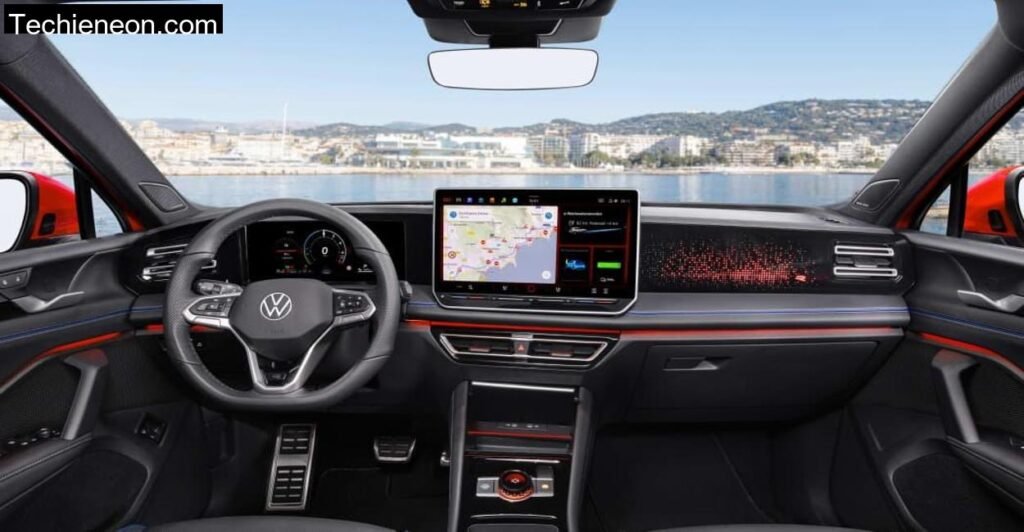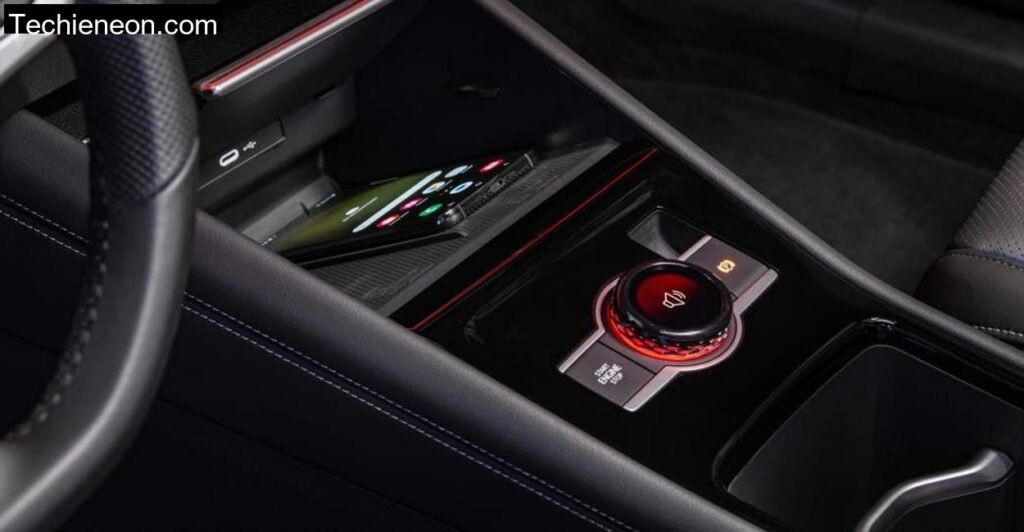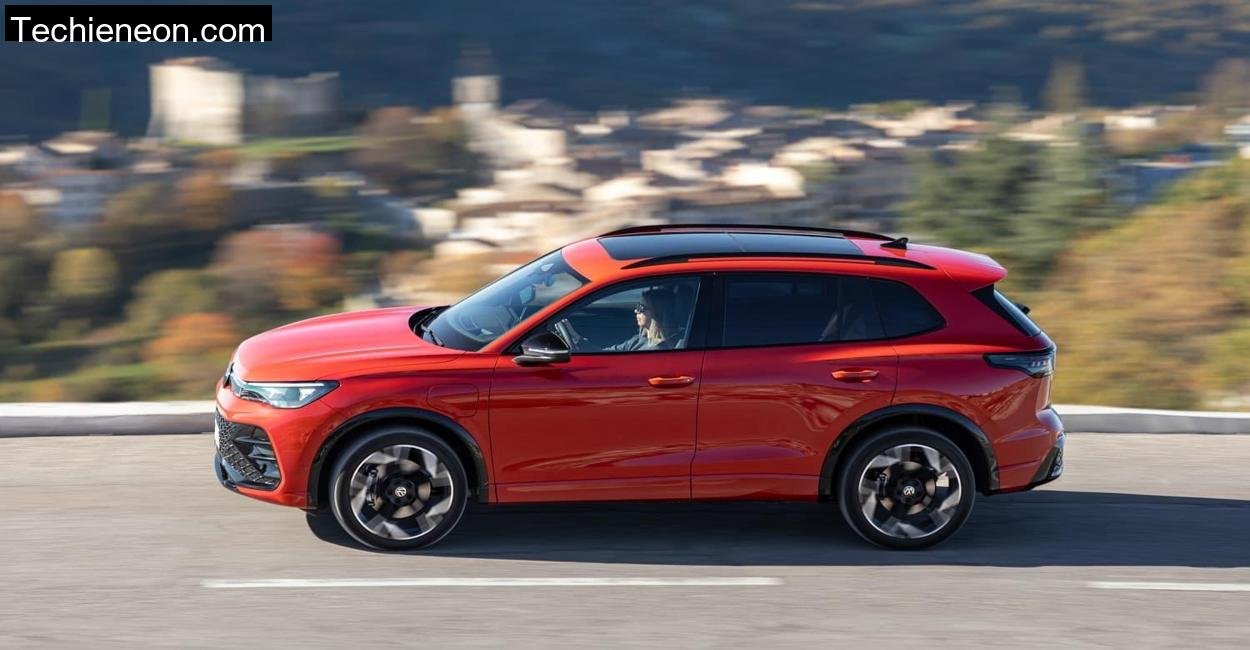Dimensions Tiguan 2024: Larger trunk
You’d be forgiven for not noticing the size changes at first glance. The 2024 Tiguan grows only slightly in length to 4.54 meters. Width (1.84 m), height (1.64 m), and wheelbase (2.68 m) remain effectively unchanged. But open the tailgate and it’s a different story.
The trunk has increased to 652 liters (combustion versions), with a measured usable volume of about 400 liters by standards. Fold down the rear seats and you’re looking at 1420 liters. That extra practicality came in handy on our drive, two camera bags, a drone kit, coats, and a crate of mineral water all fit behind the rear bench without creative stacking. VW’s clever packaging pays dividends here.
Engines: Mild hybrids with 131 and 150 hp

Our test car was the 1.5 eTSI with 150 hp, the more powerful of the two mild hybrids (a 131 hp variant is also available). The engine’s paired with a 48V starter-generator and 7-speed DSG, and it’s this powertrain that might just hit the sweet spot for most buyers.
Out on the Amtsberge inclines, the 150 hp unit delivered solid if unremarkable punch. Below 1800 rpm it’s a bit hesitant, but cresting hills and overtaking slow forestry vehicles proved no problem once you’re in the meat of the torque band. Overtaking from 60–100 km/h? Done in 5.7 seconds. It’s not sporty, but it’s competent, and more importantly, smooth. Cylinder deactivation worked imperceptibly in the background, and the electric assist made creeping through small towns near Dassel feel nearly EV-like.
TSI and TDI: Up to 2300 kg towing capacity
For those needing real hauling muscle, VW still offers the familiar 2.0 TSI and TDI engines. The TSI delivers 265 hp, while the TDIs come in 150 hp and 193 hp variants. Opt for one of the all-wheel-drive versions and you get up to 2300 kg towing capacity. We didn’t have a trailer with us this time, but it’s good to know this urban-friendly SUV can moonlight as a caravan tow master.
Plug-in hybrids with 100 km electric range

Now this is where things get interesting. VW’s new eHybrid offerings push the boundaries of plug-in capability. Thanks to a new 19.7 kWh battery (net), both 204 hp and 272 hp variants can now go up to 122 kilometers on electric power alone (WLTP).
That’s not just useful, it’s game changing. We spent a morning loop running from Stadtoldendorf to the Amtsberge’s southern edge on purely electric power. No engine hum, no tailpipe emissions, just birdsong and tire noise on the wet tarmac. For daily commutes or quiet Sunday drives through the woods, the eHybrid could easily become the new default.
Tiguan eHybrid can also charge quickly
What’s more, the eHybrid can DC fast charge at up to 50 kW. That’s rare among plug-ins. AC charging goes up to 11 kW. After our electric stretch, we topped up the battery from 15% to 80% at a local charging park in Holzminden in about 25 minutes, just enough time for coffee and notes. This alone makes the Tiguan a leader among PHEVs.
VW Tiguan with adaptive suspension
Our test car came with the DCC Pro adaptive chassis and 19-inch wheels. On rougher patches climbing the Amtsberge, the Comfort setting soaked up potholes and gravel dips well, though sharp-edged bumps were still felt. Sport mode stiffened everything noticeably, which was useful for downhill switchbacks, but we left it in “Individual” most of the time to fine-tune damping and steering.
It’s not a magic carpet ride, but it’s genuinely versatile. Highway stretches were composed and quiet, and on tight country lanes, body control was well managed. Progressive steering also helped, tighter turns required less input, which came in handy on narrow forest roads.
VW Tiguan 2024: Four trim levels
VW now offers four trims: Tiguan, Life, Elegance, and R-Line. Each builds on the last, with the R-Line adding sporty touches and extra flair. Our R-Line test car featured ambient lighting, a larger infotainment screen, dynamic turn signals, and 19-inch alloys. But even the base Tiguan gets a digital cockpit and decent driver assists.
Depending on needs and budget, each trim presents a coherent, upscale package, no version feels “stripped down,” and you won’t need to reach R-Line to get a premium feel.
Conclusion
The 2024 VW Tiguan might not reinvent the SUV playbook, but it refines it in almost every way that matters. With a more usable trunk, broader engine range including true long-range plug-in hybrids, meaningful cabin upgrades, and adaptive tech that works, it’s everything a Tiguan should be, and more.
Driving it through the Amtsberge gave us time to appreciate its subtleties. It’s not the most exciting SUV. But it’s one of the most complete. From the deep hybrid integration to the generous space and thoughtful design, this is a family car, a commuter, a weekender, and a tow vehicle all in one. No wonder it’s still the bestseller.


Leave a Comment